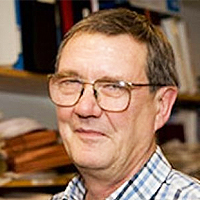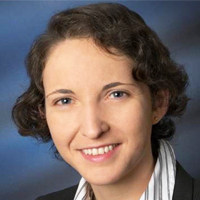The Indole acetic acid in bacteria, fungi and plants
Published on: 17th November, 2022
Indole acetic acid (AIA) is the most important plant growth hormone since it intervenes in the mechanisms of cell growth and differentiation and is produced mostly in the meristematic zones of the plant for apical dominance or root growth. AIA is also produced in root nodules and plant galls. In the latter cases, its presence is associated with endophytic bacteria. Although it is a plant growth hormone, it is also produced by bacteria such as Azospirillum brasilense and Bradyrhizobium japonicum. These species live in the soil (rhizosphere) or can colonize the roots (endophytic) of their hosts. From these bacteria, there are also isolates that are nitrogen fixers, which in addition to providing growth factors to plants, contribute by releasing nitrogenous molecules that improve plant nutrition.
Abnormal uterine bleeding and severe anemia cause the life-threatening condition
Published on: 22nd November, 2022
The World Health Organisation (WHO) defines anemia as a global public health problem. It is a medical condition in which the number of red blood cells or the hemoglobin concentration within them is below the physiological range. We present a case of a 40-year-old woman with Abnormal Uterine Bleeding (AUB) accompanied by malaise, weakness, and tachycardia. The patient reported heavy menstrual bleeding for the past 14 days. Speculum examination revealed that the bleeding was from the uterus. There were no pathological findings during a gynecological and transvaginal ultrasound examination. A complete blood count performed at the time of her arrival showed a low hemoglobin level of 24 g/L, a low hematocrit level of 7,4%, a mean corpuscular volume of 98,7 fL and a number of red blood cells 0,75 x 1012/L. Due to the severity of the anemia, she was given 6 units of red blood cell transfusion, 2 fresh frozen plasmas and tranexamic acid accompanied with calcium carbonate. The curettage was performed. The pathohistological finding was endometrium in proliferation. Afterward, the hemoglobin level increased to 90 g/L. Their past medical history revealed that she abused alcohol. On an abdominal CT scan, Alcohol-Related Liver Disease (ARLD) was confirmed. We should keep in mind that coagulopathy could be the underlying cause of abnormal uterine bleeding and that anemia must be analyzed for successful treatment. A multidisciplinary approach to anemia caused by AUB is required in cases of severe anemia.
Evaluation of pulp and paper-making potential of Acacia melanoxylon based on chemical composition grown at Chencha, Ethiopia
Published on: 23rd November, 2022
The study aimed to examine the chemical composition of Acacia melanoxylon wood as a potential raw material for pulp and paper manufacturing. Samples of Acacia melanoxylon were taken systematically based on tree height at the bottom (10%), middle (50%), and top (90%) of market height. The sample was sorted, dried, milled, and sieved, and all chemical compositions were determined by the standards outlined in ASTM except cellulose and hemicellulose, which were determined by the Kurschner-Hoffer and alkali extraction methods, respectively. The results of the study showed that the overall average values of chemical composition along tree height levels were 45.02%, 21.94%, 23.79%, 5.52%, 3.24% and 0.48% for cellulose, hemicellulose, Klason lignin, hot-water solubility, alcohol-benzene extracts, and ash content, respectively. Except for hot-water extractives, the chemical composition of the bottom and top portions differed significantly. Generally, this study suggests that the chemical composition of Acacia melanoxylon wood is well suited for pulp and paper production.
Validation of Kinetic Stem Cell (KSC) counting algorithms for rapid quantification of human hematopoietic stem cells
Published on: 28th November, 2022
Specific quantification of therapeutic tissue stem cells (TSCs) is a major challenge. We recently described a computational simulation method for accurate and specific counting of TSCs. The method quantifies TSCs based on their unique asymmetric cell kinetics, which is rate-limiting for TSCs’ production of transiently-amplifying lineage-committed cells and terminally arrested cells during serial cell culture. Because of this basis, the new method is called kinetic stem cell (KSC) counting. Here, we report further validations of the specificity and clinical utility of KSC counting. First, we demonstrate its quantification of the expected increase in the hematopoietic stem cell (HSC) fraction of CD34+-selected preparations of human-mobilized peripheral blood cells, an approved treatment product routinely used for HSC transplantation therapies. Previously, we also used the KSC counting technology to define new mathematical algorithms with the potential for rapid determination of TSC-specific fractions without the need for serial culture. A second important HSC transplantation treatment, CD34+-selected umbilical cord blood (UCB) cells, was used to investigate this prediction. We show that, with an input of only simple population doubling time (PDT) data, the KSC counting-derived “Rabbit algorithms” can be used to rapidly determine the specific HSC fraction of CD34+-selected UCB cell preparations with a high degree of statistical confidence. The algorithms define the stem cell fraction half-life (SCFHL), a new parameter that projects stem cell numbers during expansion culture. These findings further validate KSC counting’s potential to meet the long-standing unmet need for a method to determine stem cell-specific dosage in stem cell medicine.
Ovarian lymphoma – A rare presentation
Published on: 6th December, 2022
Non-Hodgkin's lymphoma involving the ovaries is unusual and may cause confusion for the clinician since its presentation could resemble other, more frequent tumors. Malignant lymphoid cells may occur in the ovary either as a primary neoplasm or as a secondary manifestation of a disseminated occult or known disease. The most common presenting symptoms or signs of malignant lymphomas involving the ovaries are abdominopelvic pain or mass.
Bioinformatics as a modern tool in forensic science for data understanding & investigation in research
Published on: 8th December, 2022
Modern-day biology is witnessing a data explosion with a vast amount of information generated from ongoing genome and sequencing projects. The abundance of data from genome sequences, functional genomics and another high throughput (HTP) technique with the potential of computing has led to rising of a new discipline namely ‘bioinformatics’. Bioinformatics is a young but fast-growing field for biological data collection, organization, interpretation, and modeling. Tools and techniques for bioinformatics are derived from multidisciplinary combinations of varied disciplines from natural and physical sciences. Previously various disciplines were carved out as and when sufficient specialization was achieved. However, now bioinformatics is borne out of an alliance between existing disciplines from life and non-life. Bioinformatics encompasses new foundations for the collection, organization, and mining of gene/ protein sequences, three-dimensional structures, and biochemical functions, for modeling biological processes of functioning cells. DNA sequencing performed on an industrial scale has produced a vast amount of data to analyze. Although the Human Genome Project is officially over, improvements in DNA sequencing continue to be made. The field of forensic science is increasingly based on biomolecular data and many European countries are establishing forensic databases to store DNA profiles of crime scenes of known offenders and apply DNA testing.
Optimization of the fermentation process, characterization and antioxidant activity of exopolysaccharides produced from Azotobacter As101
Published on: 20th December, 2022
Azotobacter was selectively isolated and purified from the soil samples of Xinjiang Salt Lake Scenic spot, the fermentation technology of exopolysaccharides (EPS) by Azotobacter was optimized, and the antioxidant activity of exopolysaccharides (EPS) was studied. The bacteria were isolated and purified from the soil samples by the scribing method and the 16SrRNA gene was used for molecular identification. The carbon source, fermentation time, inoculation amount and pH of target bacteria in the exopolysaccharides (EPS) fermentation process were optimized through single-factor experiments and their antioxidant activity was measured. Eight types of Azotobacter were isolated and purified from the soil samples of Salt Lake scenic spot. Among them, As101, which showed 99.58% homology with Azotobacter salinestris, was selected as the target strain. Through single-factor experiments which used exopolysaccharides (EPS) yield and exopolysaccharides content as indexes, the optimal conditions for the As101 fermentation process were determined as follows: fermentation temperature 35, fermentation time 96h, pH 7 and mannitol as carbon source. Exopolysaccharides content from Azotobacter salinestris was 61.35% and the yield was 6.34 g/L. The results of the exopolysaccharides (EPS) antioxidant activity experiment under optimal conditions showed that As101 EPS had excellent scavenging ability against DPPH free radical, ABTS free radical and hydroxyl free radical, with IC50 values of 6.11 mg/ml, 2.42 mg/ml and 9.57 mg/ml, respectively. As101 with high yield and high exopolysaccharides content was isolated from saline soil in a special environment of Xinjiang, and the EPS obtained showed excellent antioxidant activity. The Azotobacter found in this study would provide the material basis for further opening up the adsorption of exopolysaccharides on heavy metals and the improvement of saline-alkali soil and contribute to further understanding of the structure and other activities of exopolysaccharides derived from Azotobacter.
Radiation-induced salivary gland damage/dysfunction in head and neck cancer: Nano-bioengineering strategies and artificial intelligence for prevention, therapy and reparation
Published on: 20th December, 2022
Saliva is produced by and secreted from salivary glands. It is an extra-cellular fluid, 98% water, plus electrolytes, mucus, white blood cells, epithelial cells, enzymes, and anti-microbial agents. Saliva serves a critical role in the maintenance of oral, dental, and general health and well-being. Hence, alteration(s) in the amount/quantity and/or quality of secreted saliva may induce the development of several oro-dental variations, thereby the negatively-impacting overall quality of life. Diverse factors may affect the process of saliva production and quantity/quality of secretion, including medications, systemic or local pathologies and/or reversible/irreversible damage. Herein, chemo- and/or radio-therapy, particularly, in cases of head and neck cancer, for example, are well-documented to induce serious damage and dysfunction to the radio-sensitive salivary gland tissue, resulting in hypo-salivation, xerostomia (dry mouth) as well as numerous other adverse Intra-/extra-oral, medical and quality-of-life issues. Indeed, radio-therapy inevitably causes damage to the normal head and neck tissues including nerve structures (brain stem, spinal cord, and brachial plexus), mucous membranes, and swallowing muscles. Current commercially-available remedies as well as therapeutic interventions provide only temporary symptom relief, hence, do not address irreversible glandular damage. Further, despite salivary gland-sparing techniques and modified dosing strategies, long-term hypo-function remains a significant problem. Although a single governing mechanism of radiation-induced salivary gland tissue damage and dysfunction has not been yet elucidated, the potential for synergy in radio-protection (mainly, and possibly -reparation) via a combinatorial approach of mechanistically distinct strategies, has been suggested and explored over the years. This is, undoubtfully, in parallel to the ongoing efforts in improving the precision, safety, delivery, and efficacy of clinical radiotherapy protocols/outcomes, and in designing, developing, evaluating and optimizing (for translation) new artificial intelligence, technological and bio-pharmaceutical alternatives, topics covered in this review.
The thoracoscopic approach in the management of parapneumonic pleural effusion in children
Published on: 23rd December, 2022
Background: Parapneumonic pleural effusion is a relatively common entity and continues to be a major cause of morbidity in children. However, managing this disease is still a matter of controversy between surgical and non-surgical options. With the advancement of mini-invasive surgery, video-assisted thoracoscopic surgery (VATS) has become a mainstay in the treatment of parapneumonic effusion in children. This study aimed to evaluate the clinical characteristics and pathological features of parapneumonic pleural effusion in children and to explore the feasibility and safety of the thoracoscopic approach in the pediatric population.Methods: The clinical data of all patients who underwent VATS for parapneumonic effusion between 2007 and 2021 were analyzed retrospectively. Factors that were documented included demographic criteria, clinical manifestations, preoperative examinations, therapeutic procedures, intraoperative findings, postoperative complications, and outcomes.Results: Totally, 35 patients with a mean age of 5.14 ± 3.9 years were operated on thoracoscopically. The mean duration of evolution before VATS was 9 days ± 4. All children were hospitalized in a Pediatric Continuing Care Unit. Antibiotic therapy was administrated in combination in all cases. Corticosteroid therapy was used in 2 patients. Thoracentesis was performed in 6 patients. Thoracostomy tube drainage was placed before surgery in 11 patients. The average duration of drainage before VATS was 6 days ± 4. VATS decortication and/or debridement was indicated as second-line in 23 patients. The average duration of the surgery was 51 minutes (20 min - 115 min). There is no conversion to open surgery and no intraoperative procedure-dependent complication. 4 children have early complications after the VATS and one patient had a late postoperative complication. There were no deaths during the hospital stay or follow-up. Conclusion: In skilled hands, VATS is safe, feasible, and effective in the management of parapneumonic pleural effusion in children with excellent outcomes.
Outcome of liver transplantation for autoimmune hepatitis in South Africa
Published on: 31st December, 2022
Background: Liver Transplantation (LT) is the definitive treatment for Autoimmune Hepatitis (AIH) in patients with decompensated cirrhosis, liver failure and hepatocellular carcinoma. Outcomes of LT in AIH among black-Africans are not well-defined. We performed a single-center retrospective-review of adult LT patients. The study period was from 1st August 2004-31st August 2019. The primary aim was to document 1- & 5- year patient and graft survival. A secondary aim was to compare the survival of black-Africans to Caucasians. Data was analyzed using survival-analysis. Results: A total of 56 LT were performed for AIH. Sixty-seven percent (n = 38/56) had confirmed AIH on explant histology. Of these, the majority i.e., 79% (30/38) were female and 21% (8/38) were male. There were equal numbers of black-African 42% (n = 16/38) and Caucasian 42% (n = 16/38) patients. Rejection was four-times higher in black-Africans as compared to Caucasians. Forty-four percent (n = 17/38) had an acute rejection episode and 13% (5/38) had chronic rejection. Recurrence was found in four black-African females. Post-LT patient survival at 1- and 5- years was 86.5% and 80.7%, and graft survival was 94% and 70.8% respectively. The 5- year patient survival was insignificantly lower for black-Africans (73.9%) as compared to Caucasians (83.7%) (p - value 0.26, CI 6.3 - 12.2). Five-year graft survival was significantly lower among black-Africans (55%) as compared to Caucasians (84.8%) (p - value 0.003 CI 3.8 - 8.1)Conclusion: Black-Africans had a four-fold higher rate of rejection compared to Caucasians. Recurrent AIH was only found in patients of black ethnicity. Similar 1- & 5- year patient survival rates were observed between the two ethnicities. The 5-year graft survival among black-Africans was significantly lower than Caucasians.
Feasibility study of magnetic sensing for detecting single-neuron action potentials
Published on: 31st December, 2022
Understanding the magnitude of the local magnetic fields generated by neurons is critical to assessing the feasibility of novel magnetic field sensors to record in vivo neuronal activities at cellular resolution. However, the strength of the magnetic fields induced by individual neurons and neuronal networks has not been systematically studied. This step is critical for evaluating and benchmarking the ability of different magnetic field sensors to record neuronal activities with far better spatial and temporal resolution. Herein, FEM exemplary models and open-source computational libraries are used to calculate the magnetic fields generated by individual neurons and neuronal networks at micrometer distances. Our theoretical results show that the magnetic field generated by a single-neuron action potential can be detected by ultra-high sensitivity sub-pT magnetic field sensors, which opens the door to future in vivo decoding of neuronal activities through custom neural networks. We anticipate that the identification of single-neuron signals with high-sensitivity magnetic devices will allow the interface of nanoscale devices to interpret biological signals supported by machine-learning techniques capable of monitoring and predicting the localized activities underlying brain computations.
Effects of Pleiotrophin (PTN) on the resistance to paclitaxel in ovarian cancer cells
Published on: 23rd February, 2023
The pathogenesis of an ovarian disease is connected with PTN and its receptor protein tyrosine phosphatase receptor Z1 (PTPRZ1). Paclitaxel is the first-line drug for the therapy of ovarian cancer. With the increment of paclitaxel chemotherapy, paclitaxel obstruction happens in the late phase of therapy frequently. By treating A2780 and SKOV-3 cells with PTN, we found the development of the two cell lines was enhanced. Different concentrations of PTN were added to A2780 and SKOV-3 cells treated with paclitaxel and the results of MTT showed that the inhibitory effect of paclitaxel on these two cell lines was weakened. The results of apoptosis assays showed that PTN could slow down the rate of apoptosis and its concentration dependence in both cell lines. To further investigate the impact of PTN on the paclitaxel responsiveness of ovarian malignant growth cells, A2780 and SKOV-3 cells were transfected with sh-PTN-1, sh-PTN-2 and sh-NC plasmids. The results of PCR and Western Blot showed that both RNA-interfering plasmids could inhibit PTN in A2780 and SKOV-3 cells. The results of MTT showed that the inhibitory effect of paclitaxel on cells transfected with sh-PTN-1 expanded compared with the benchmark group. Apoptosis assays showed that the complete apoptosis pace of A2780 and SKOV-3 cells with sh-PTN-1 plasmid induced by paclitaxel was accelerated obviously compared with the benchmark group. To summarize, the results suggested that PTN could enhance the resistance to paclitaxel in ovarian cancer cells, which provides a groundwork for studying on drug resistance of cancer cells to paclitaxel and a new perspective for ovarian cancer therapy.
Optimization of the kinetics of siRNA desorption from the surface of silicon nanoparticles
Published on: 2nd March, 2023
Oncological diseases are one of the most significant medical and social diseases in most countries of the world. Over the past decades, the search and development of new drugs, treatment regimens and methods of molecular diagnostics of malignant neoplasms remains relevant. In turn, an important goal of molecular genetic research is to suppress the expression of genes responsible for the development of tumors. The key targets taken into account in the development of antitumor drugs are proteins involved in carcinogenic changes in the cell. One of the promising molecular targets for the development of medicinal compounds in targeted therapy of tumor diseases is poly(ADP-ribose)polymerase 1 (PARP1). A potential way to inhibit PARP1 even at the stage of protein translation is RNA interference due to small interfering RNAs (siRNAs). For the penetration of siRNAs into the target cell, it is necessary to develop a method of their transportation controlled in space and time. An actual direction for solving this problem is the use of highly stable porous silicon-based nanoparticles. In the current study, in order to increase the functionality of nanoparticles, their surface was modified with various agents (functionalization), providing increased efficiency of drug loading and more uniform release.
Outcome of Outpatient Autologous Hematopoietic Stem Cell Transplantation in Patients with Multiple Myeloma and Relapsed and Refractory Hodgkin Lymphoma. The Experience of King Fahad Specialist Hospital in Dammam, Saudi Arabia
Published on: 8th March, 2023
Background: Autologous hematopoietic stem cell transplants (HSCT) is the standard of care for transplant-eligible patients with newly diagnosed multiple myeloma (MM) and patients with relapsed and refractory Hodgkin lymphoma (R/R-HL) who achieve chemosensitivity after salvage therapy. Although autologous HSCT is routinely performed in an inpatient setting, the procedure can safely be performed in an outpatient setting.Methods and materials: A retrospective study of patients with MM and R/R- HL who received outpatient autologous HSCT at King Fahad Specialist Hospital (KFSH) in Dammam, Saudi Arabia between the first of April 2017 and the 31st of January 2022 was performed.Results: Over the study period of 4 years and 10 months, a total of 90 outpatient autologous HSCTs were performed for 79 patients (54 patients with MM; 4 of them received planned tandem autografts and 7 other myeloma patients received second autologous HSCTs for relapsed or progressive disease; and 25 patients with R/R-HL) at our institution. The median ages of patients with MM and those with R/R-HL at HSCT were 50.4 years and 27.8 years respectively.At the presentation of their MM, the following high-risk (HR) features were encountered: stage II and III diseases according to the revised international scoring system (RISS) in 53.7%; adverse cytogenetics in 42.6% and extensive bone involvement in 53.7% of patients. In patients with HL at presentation, 48% of patients had stage IV disease according to Ann Arbor staging classification and 84% of patients had B symptoms.Survival for 100 days post-HSCT for all patients with MM and HL who received outpatient autologous transplants was 100%. For patients with MM, the overall survival (OS) rates at 3 years and 4 years post-HSCT were 80% and 67%, while the progression-free survival (PFS) rates over 3 years and 4 years were 58% and 38% respectively. For patients with HL, the OS at 6 years post-HSCT was 95% while the PFS rates at 3 years and 6 years post-HSCT were 84% and 62% respectively.Conclusion: Outpatient autologous HSCT for patients with MM and HL is safe, and feasible and can lead to short-term as well as long-term outcomes that are comparable to autologous transplantation performed in an inpatient setting. Additional benefits of outpatient autologous include saving beds and reducing hospital costs.
Soliton phenomena in the process of the functioning of the heart
Published on: 14th March, 2023
The biochemical model explains the intricate mechanisms of psychobiological life. He still cannot explain what the transition from inanimate to living matter is all about. Where is the threshold and what is its essence, what role do biochemical processes play in the coherence of the soma with consciousness and its impact on the soma and vice versa? A similar problem is with other mental processes, their nature does not fit into the biochemical model of life and is inexplicable on the basis of biochemical interactions, again it is much easier to describe it in the light of quantum processes - including wave physics. It is similar to the functioning of the heart or other organs, where only the biochemical processes of the cell are considered, ignoring the bioelectronic processes. Man is not only a purely biological construct but also contains the basis of biochemical, bioelectronic, information, and cybernetic processes that are responsible for shaping the psychobiological processes of man. Contemporary biosystems in science are considered at the level of corpuscular structures, ignoring energy and information structures. By shifting the cognitive emphasis towards energy and information structures, the organism can be perceived as a quantum generator of information: electromagnetic, soliton, acoustic, spin and bioplasma. This bioelectronic construction creates homo electronics with his electronic personality.
Pomaded and unctuous- spindle cell lipoma
Published on: 17th March, 2023
Spindle cell lipoma and pleomorphic lipoma emerge as benign, adipocytic neoplasms representing a morphologic continuum of a singular neoplasm. In addition to myofibroblastoma and cellular angiofibroma, spindle cell lipoma or pleomorphic lipoma configures as a constituent of chromosome 13q/RB1 family of tumors. Initially scripted by Enzinger and Harvey in 1975 with an obsolete terminology of dendritic fibromyxolipoma, aforesaid adipocytic neoplasms articulate an estimated 1.5% of lipomatous tumors. In contrast to conventional lipoma, spindle cell lipoma or pleomorphic lipoma is an uncommonly discerned variant, demonstrating a proportion of 1: 60.
In the pursuit of a new route on acute myeloid leukemia treatment
Published on: 29th December, 2021
Acute myeloid leukaemia (AML) is the forefront disorder of the bone marrow among others that disrupt the normal production of blood cells and platelets. The bone marrow microenvironment or the bone marrow niche (BM niche) that orchestrates the proliferation and survival of Leukaemic stem cells (LSC) is the reason for relapse after complete remission and also chemotherapy drug resistance. As for most cancers oxidative phosphorylation, a fundamental mitochondrial process of energy production, is under focus for the treatment of AML and a novel strategy of targeting heat shock proteins appears as a promising route for further research.
Hypochlorous acid has emerged as a potential alternative to conventional antibiotics due to its broad-spectrum antimicrobial activity
Published on: 30th March, 2023
Hypochlorous acid (HOCl) is a potent antimicrobial agent that has recently gained attention as a potential alternative to conventional antibiotics. HOCl is produced by the human immune system in response to infection and is known for its broad-spectrum antimicrobial activity. It is effective against a wide range of microorganisms, including bacteria, viruses, and fungi, and has been shown to be more effective than many conventional antibiotics. One of the key advantages of HOCl is its ability to kill bacteria without promoting the development of antibiotic resistance. Unlike conventional antibiotics, which target specific bacterial structures or processes, HOCl acts by disrupting multiple cellular components, making it much more difficult for bacteria to develop resistance. Another advantage of HOCl is its safety profile. Unlike many conventional antibiotics, HOCl is not toxic to human cells and does not cause side effects such as gastrointestinal upset or allergic reactions. Overall, HOCl shows great promise as a potential alternative to conventional antibiotics, particularly in the face of rising antibiotic resistance. With further research, it may become an important tool in the fight against infectious diseases. Herein, we discuss the mechanisms of HOCl antimicrobial action, its potential clinical applications, and future directions for research. This review aims to provide an overview of the use of hypochlorous acid (HOCl) as an antibiotic agent.
Design and optimization of mRNAs encoding an Anti-TIGIT antibody with therapeutic potential for cancer in TIGIT-humanized BALB/c Mice
Published on: 7th April, 2023
mRNA drugs are synthesized using cell-free systems without complex and stringent manufacturing processes, which makes their preparation simple, efficient, and economical. Over the past few years, mRNAs encoding antibodies have been one of the research frontiers of antibody drug development. In cancer immunotherapy, mRNAs encoding immune checkpoint antibodies may be advantageous regarding antibody persistence and durability of the anti-tumor immune response of patients. In our previous study, a candidate antibody—AET2010—targeting the novel immune checkpoint TIGIT was reported. Its anti-tumor activity was also investigated using adoptive transfer of NK-92MI cells in a xenograft mouse model, but the limitations of the model did not facilitate precise evaluation. In the present study, we further investigated the therapeutic potential of AET2010 for cancer in TIGIT-humanized BALB/c mice. Next, we explored the design, synthesis, and optimization of mRNAs encoding AET2010 and ultimately obtained a candidate mRNA (mRNA-BU) with favorable in vitro and in vivo expression levels of active AET2010. Particularly, lipid-nanoparticle-encapsulated mRNA-BU delivered to mice produced AET2010 with significantly higher peak concentration and expression duration than an equivalent dose of original AET2010. This study provides a sound basis for developing novel drugs targeting TIGIT.
Expanding human-based predictive models capabilities using organs-on-chip: A standardized framework to transfer and co-culture human iPSCs into microfluidic devices
Published on: 13th April, 2023
There is an urgent need for predictive preclinical models to enhance the success rate of clinical trial outcomes. One of the main reasons for drug attrition is the lack of translational models, methods using human cells are particularly in the spotlight of regulatory bodies as they offer an alternative to in vivo studies and have the potential to improve the translational of preclinical trials. Organs-on-Chips (OoCs) are sensible candidates to reduce the cost and the ethical burden of animal models while accelerating and de-risking drug development. The innovation of such systems is based on both the increased relevance of the cells used and the ability to build precise, yet physiologically relevant, complex architectures. The use of microfluidic technologies with human induced pluripotent stem cells (hiPSCs) opens new routes to create relevant in vitro approaches as they will soon be able to reproduce clinical characteristics of donors or specific populations. The adoption of OoC models by pharmaceutical industries, and in fine by regulatory agencies, still requires: (i) establishing standardized, reproducible, robust, and replicable cell culture protocols with specific validation and characterization criteria, (ii) evidence that the technology predicts human responses, thus allowing to contribute efficiently and reliably to clinical trials success of novel therapeutics, and (iii) evidence that the models refine and reduce animal testing without compromising with the quality and the pertinence of the data generated.
















